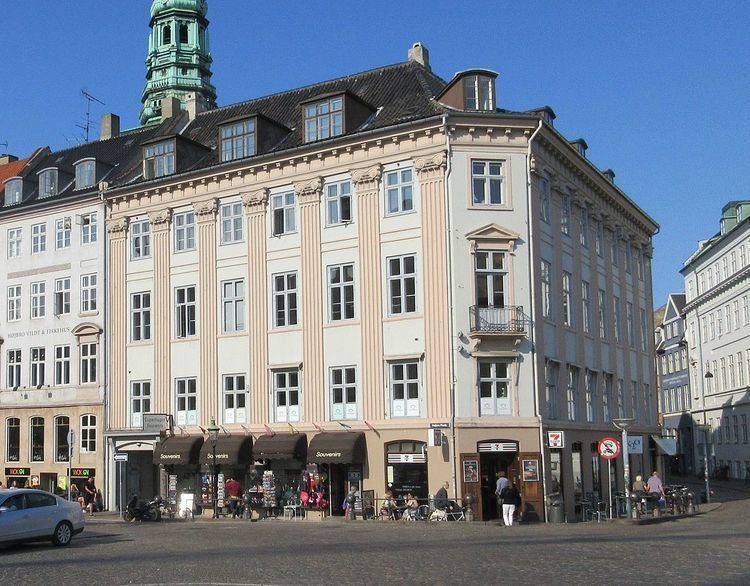Country Denmark Completed 1799 | Construction started 1798 Client C. F. Friderici | |
 | ||
Ploug House (Danish Plougs Gård)) is a listed Neoclassical property on the corner of Højbro Plads and Ved Stranden in central Copenhagen, Denmark. It dates from the building boom which followed after the Copenhagen Fire of 1795 but takes its name after the poet, publisher and politician Carl Ploug who lived there in the 1860s and 1870s and also published his magazine Fædrelandet from the premises.
Contents
Early history
The house was built in 1798–99 by Andreas Hallander for C. F. Friderici, a wealthy merchant. It was built on the foundation of Ellen Marscins Gård which had been destroyed in the Copenhagen Fire of 1795 along with most of the other buildings in the area.
After Friderici's death, the building was purchased by J. D. Brandis (1762-1845), royal physician and Konferensråd, who resided there until 1829.
The Melchior's and H. C. Andersen
Groceer Moritz G. Melchior (1816-1884) acquired the building in 1855. He had his family home on the second floor and also ran his company Moses & Søn G from it. The Melchior's were among Hans Christian Andersen's closest friends. He stayed with the family in their residence on Højbro Plads from 13 March until 21 May 1870 where he wrote What the Whole Family Said, and the Melchiors also hosted the celebration of his 70th birthday. He spend his last year at Melchior's country house Rolighed in Østerbro where he died on 4 August 1875. Melchior's two unmarried daughter Louise Melchior continued to live in the house until her death in 1934.
Carl Ploug and later history
The poet and politician Carl Ploug purchased the building from Melchior in 1862. He published his magazine Fædrelandet ("The Nation") from the address and also had his home in the house. His family owned the property for more than 50 years.
Architecture
The house is designed in the Neoclassical style. It consists of four storeys and a celler and has six bays towards Højbro Plads and seven towards Ved Stranden. The facade is decorated with pilasters. The "bevel" corner is typical for the buildings of the period, being a requirement under the new building regulations to facilitate the fire corps' passage through the city in the event of fire.
